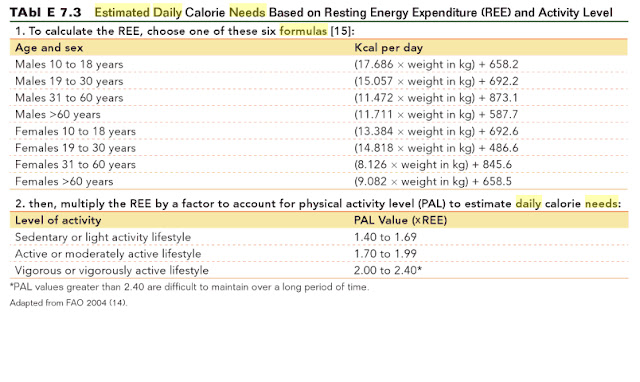Our bodies need a specific amount of Calories every day in order to function. Depending on the amounts that we supply our bodies with, different reactions will come about. Too many Calories and our bodies will tend to store the surplus in the form we commonly refer to as "fat". Too few calories and our bodies although appearing to slim down, may actually resort to storing most of it's caloric intake as fat in order to be adequately prepared for the lack of incoming energy. You may be thinking "WHAT?!". To keep things simply, it is far better to know approximately how many Calories you need each day in order to keep your body functioning properly.
Although there are many variables that affect caloric requirements there are formulas used to calculate calorie needs. Due to the variables such as metabolic rates, these formulas should be used as a framework in order to have a reference point. Once you have your target caloric intake it is necessary to check whether an increase or decrease is needed. This is done simply by consuming the amount of calories and if there is no change in the desired direction, increases or decreases should be made in order to reach the required amount.
One thing to note is that in order to make a body weight change, a person needs to eat the required calories as if he/she is already at the body weight desired. For example if I want to be 195 pounds, I need to consume the amount of calories that a 195 pound body needs. You may consume relatively high amounts of protein and not see a significant change in body weight desired because calorie surpluses or deficits are what cause weight change.
Here are the formulas
Turo Gamez NSCA-CPT
References:
Earle, Roger W. , and Thomas R. Baechle. NSCA's Essentials of Personal Training. October 27, 2011 ed. ,: Human Kinetics, 2. Print.

No comments:
Post a Comment